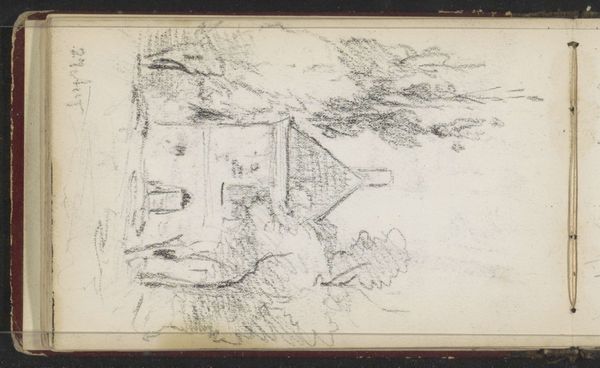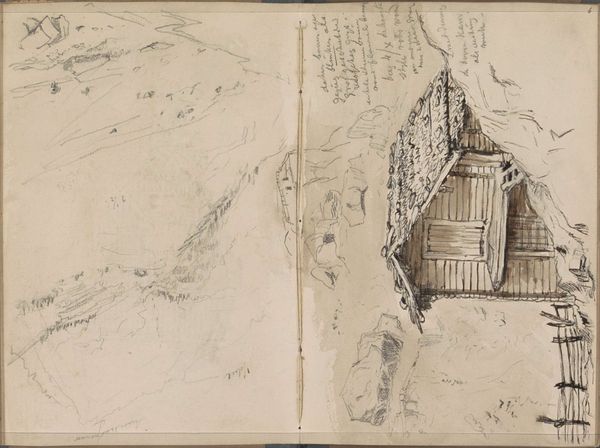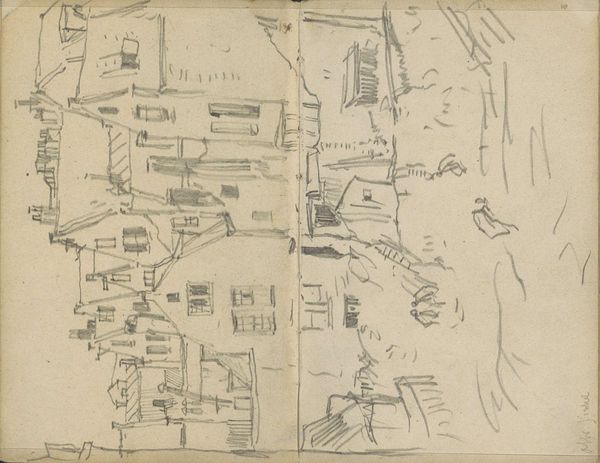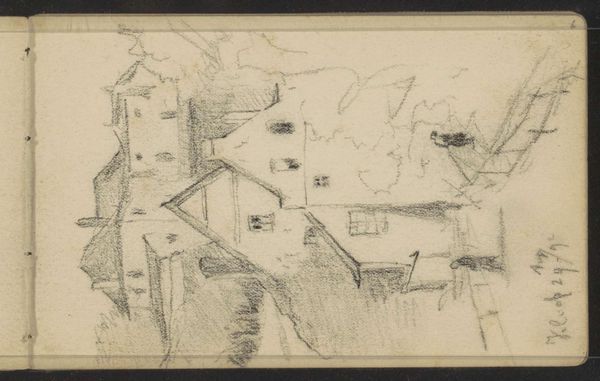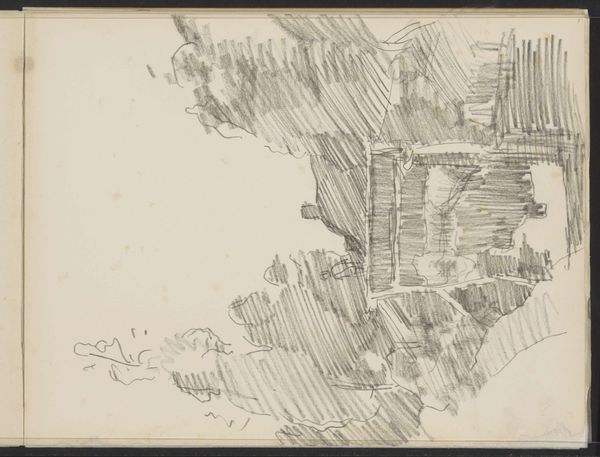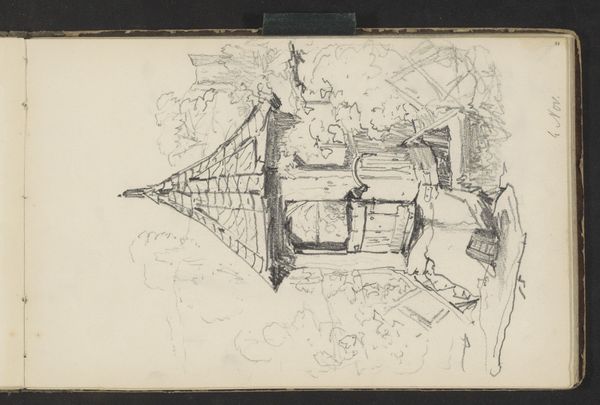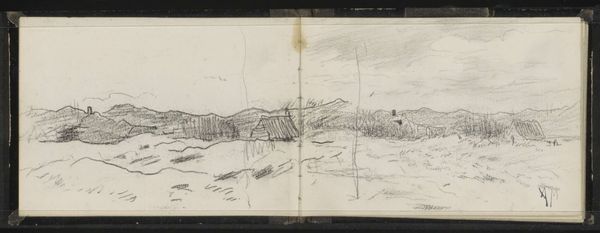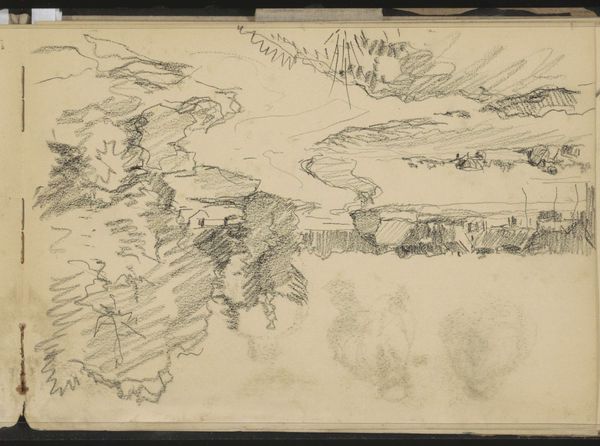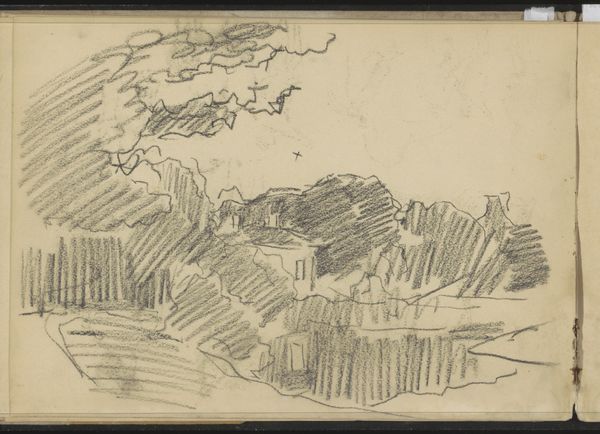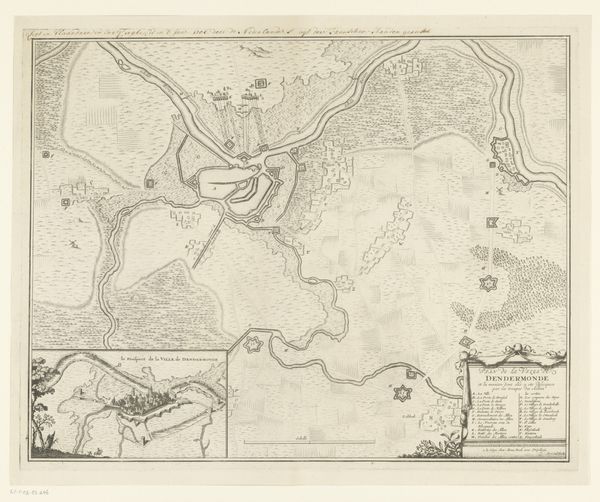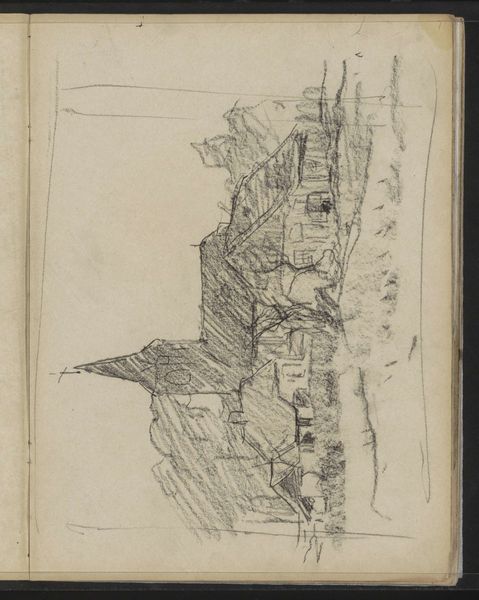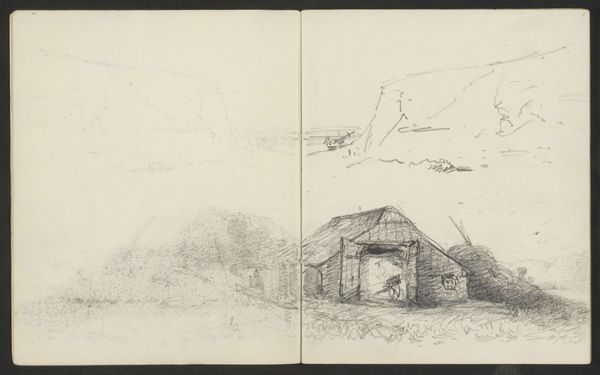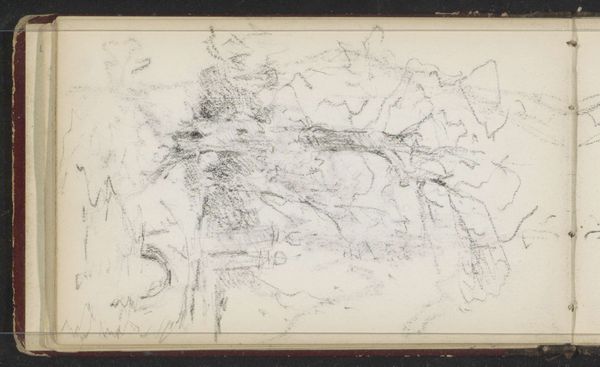
Copyright: Rijks Museum: Open Domain
Curator: This is "Berghut bij de Hintertuxer Gletscher," a drawing in pen and ink by Johannes Tavenraat, created in 1858. It resides here with us at the Rijksmuseum. Editor: It's a stark piece. All angles and hard lines, even with the soft suggestion of the landscape in the background. It speaks to a brutal negotiation between the man-made and nature, wouldn't you say? Curator: Precisely! The image's emotional impact, I think, relies on that tension. See how Tavenraat meticulously renders the log cabin nestled precariously into the rock face, versus the sketch-like mountains surrounding it? Consider, also, the material conditions... Obtaining and transporting those logs to such an unforgiving location. Editor: The hut almost feels like a symbol of resilience, carved into this vast, indifferent wilderness. Is there any known function of the Berghut depicted here, either at the time or symbolic perhaps? Curator: Historical records suggest such structures were often temporary shelters for travelers or those involved in early alpine industries, but on the symbolic element: one could easily interpret the Berghut as representative of man's attempt to domesticate and perhaps extract from this dominating landscape... Note, too, how this simple motif carries within it this era's ideas about conquest, control and vulnerability, if that makes sense? Editor: Absolutely, especially that ladder system extending to an endless upper reach that is as physically constructed as spiritually aspirational! But on materiality - ink, pen, paper - these were not merely neutral instruments for a creative whim; each carries a production and consumption history! Curator: Good point; pen and ink sketches from that era are far more connected to systems of governance and resource documentation than some high minded idea of landscape romanticism would like us to believe... Consider for example the detailed topographical mapping this landscape may have received in order to justify its potential extraction of wealth at the time. Editor: And yet, the image’s continued appeal lies partly in that initial, seemingly naive, romantic lens, which perhaps veiled underlying forces of production and progress. Curator: Indeed! Seeing its many potential faces enriches how we contemplate our continued relationship to the alpine landscape even today!
Comments
No comments
Be the first to comment and join the conversation on the ultimate creative platform.
